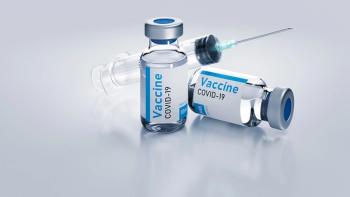
- BioPharm International-11-01-2012
- Volume 25
- Issue 11
Product Characterization: A Primer
NIBRT's Jayne Telford provides an overview of biopharmaceutical analytics and their accompanying qualification and validation steps.
In this third part of a series of primers with training experts from the National Institute for Bioprocessing Research and Training (NIBRT), Dr. Jayne Telford, Bioanalytical Training Lead, discusses the basics of biopharmaceutical product characterization. NIBRT provides training, educational, and research solutions for the international bioprocessing industry in state-of-the-art facilities. Located in South Dublin, it is based on an innovative collaboration between University College Dublin, Trinity College Dublin, Dublin City University, and the Institute of Technology Sligo.
DEFINING PRODUCT CHARACTERIZATION
BioPharm: The primary goal of product characterization is to ensure a product's safety, purity, identity, and potency. The harmonized guideline Q6B, Specifications: Test Procedures and Acceptance Criteria for Biotechnological/Biological Products, from the International Conference on Harmonization (ICH) specifically calls for determination of physicochemical properties, biological activity, immunochemical properties, purity and impurity. Can you go into more detail on why these characteristics are crucial for overall product and patient's safety?
Telford: We are talking about protein-based biotherapeutic drugs and their desired effect in the patient, which occurs by interacting with receptor proteins, with other proteins, or with other targets, to enhance or inhibit signaling or interactions in the body. For proteins to have the desired effect, they must have the correct sequence, the correct size, the correct structure, and the correct post-translational modifications so that they are recognized by their binding partner. In addition, therapeutic proteins must be biologically active and have the correct physiochemical and immunochemical properties to elicit the correct response from the patient.
To step back a bit, therapeutic proteins are generally produced by cultured cells in large bioreactors and then harvested and purified. The actual generation of the proteins in the cell occurs along a complex pathway that involves transcription of DNA in the nucleus and translation of the protein in the cytoplasm. The initial polypeptide chain is further processed by folding and by post-translational modifications to produce the final biologically active protein. These processes are very complex and, therefore, errors can occur.
For this reason, during the production of therapeutic protein, it's vital to monitor all aspects of the protein to ensure that its sequence, structure, purity, and stability are correct and consistent. Errors to the sequence and the structure of the protein could result in the drug not having the desired beneficial effect in the patient, or even worse, these errors could affect the safety of the drug and could have the potential to cause detrimental effects in the patient, such as eliciting an immunogenic response, which could lead to anaphylaxis—and that is obviously very dangerous. Basically, all proteins need to be analyzed in detail to ensure an active, pure, stable, and safe drug that can be administered to the patient.
One example of an error that can occur in a therapeutic protein is the presence of nonhuman glycosylation, such as alpha-gal on the surface of the protein. This non-human glycosylation can be recognized by the body as being foreign, and an immune response can be elicited to get rid of the drug. This incorrect product would not be active in the patient and could endanger the health of the patient.
TIMING AND INSTRUMENTATION
BioPharm: When during the process should such testing be performed?
Telford: Some people might think it's sufficient to only characterize the product during the discovery phase and then again at the final product stage; however, this is not the case. It is advised by FDA that the product be analyzed at all stages during the processing pathway, including during discovery, upstream processing, downstream processing, and right through to the final product. This thorough analysis is meant to ensure that the product is consistent, active, stable, safe, and pure from start to finish.
Analysis of all processing steps also allows any changes to the protein or other problems, such as contamination, to be detected immediately, thereby allowing for determination of where the problem is occurring and enabling faster investigations to be performed. If analysis is only carried out at one stage of a process, it is difficult to pinpoint the source of the problem and lengthy analysis would be needed to rectify the issue.
BioPharm: When performing these analyses, what techniques and instruments are most commonly used today?
Telford: There are many protein characterization methods used across the industry, all at different levels of complexity. The simplest methods include protein estimation assays, sodium dodecyl sulfate–polyacrylamide gel electrophoresis (SDS–PAGE), isoelectric focusing (IEF), and Western blotting analyses. A protein estimation assay, such as the Bradford assay, is a simple method used to determine the protein concentration of the sample. SDS-PAGE or IEF is frequently used to separate the components of the samples and to gain information on the identity and purity. Western blotting analysis is routinely used to identify and confirm the presence or absence of the protein.
Another commonly used method is capillary electrophoresis. This method is useful for gaining information on the size, charge, purity, and identity of proteins. In addition, this method provides similar information to SDS-PAGE and IEF, but it tends to be easier to use, more reliable, and more quantifiable.
There are other more complex methods for protein characterization, such as high-performance liquid chromatography (HPLC) and mass spectrometry. These methods are extremely valuable. Reversed phase chromatography, size-exclusion chromatography, and ion-exchange chromatography are particularly useful for separating the components in a protein sample and for providing information on the identity and the purity of the protein.
Mass spectrometry analysis is useful for confirming the amino acid sequence of the protein and for identifying the protein. There are many other useful tools and techniques that are widely available and widely used as well.
REGULATORY EXPECTATIONS
BioPharm: There are many regulations that the industry must follow. Can you briefly discuss the key FDA and EMA regulations that describe requirements for protein characterization of biologics and what those organizations expect today?
Telford: Numerous regulations exist for biologics in the United States and European Union, and they are categorized for different types of therapeutic proteins and for different types of production pathways.
Some examples include guidelines for recombinant proteins, guidelines for monoclonal antibodies (mAbs), and more recently, guidelines for biosimilars. However, the guidelines for all therapeutic proteins remain similar throughout the different categories and reference to the ICH quality guidelines (that is, ICH Q8 Pharmaceutical Development, ICH Q9 Quality Risk Management, and ICH Q10 Pharmaceutical Quality System) provide a good basis for understanding what is required (1–3).
To take mAb characterization as an example, information must be provided to regulatory authorities on the identity of the mAb (i.e., sequence of amino acids, structure and size, potency, heterogeneity, glycosylation, immunological properties, specificity, cross-reactivity, whether there is any aggregation of the product, and process-related impurities). Extensive analysis is required to gather and provide this information. Similar requirements are outlined for other types of proteins and processing types.
EMERGING METHODS
BioPharm: Have you come across any new or emerging analytical techniques that interest you as a training expert in bioanalytics? What gaps do you think still exist in biopharmaceutical product characterization?
Telford: Some emerging techniques involve the analysis of post-translational modifications of the therapeutic proteins, which can be very difficult. Some examples of post-translational modifications are glycosylation, phosphorylation, and oxidation, with glycosylation being the most common post-translational modification of proteins. It can be complex and diverse, making the analysis quite complicated, but advanced glycosylation analysis technologies including HPLC, ultra-HPLC, mass spectrometry, and capillary electrophoresis are emerging, thereby enabling companies to gain increasing volumes of information on glycosylation. However, this area could benefit from increased advances in technology, especially in the analysis of O-linked glycans, which are much more difficult to analyze than N-linked glycans.
Another area of interest is protein aggregation analysis. Proteins can aggregate under certain conditions to form dimers, trimers, and larger multimers. These aggregations can affect the activity, immunogenicity, and stability of therapeutic proteins. The detection of protein aggregates is complex, and many techniques are emerging to help analyze them, including dynamic and multi-angle light scattering, analytical ultracentrifugation, and size-exclusion chromatography.
CHALLENGES AND BEST PRACTICES
BioPharm: Validation of analytical methods is crucial to meet regulatory requirements. Where do qualification and validation of methods come into play when characterizing a product?
Telford: Qualification and validation are indeed important, and challenging. All laboratory equipment must be installed and qualified (IQd) and operationally qualified (OQd), and performance qualified (PQd) prior to validation of the actual test methodologies. Validation of analytical methods is covered well in ICH Q2 guideline on validating analytical procedures (4).
A significant part of validation involves ensuring that the software that is in use with the equipment also meets the requirements of US Title 21 Code of Federal Regulations Part 11, entitled Electronic Records; Electronic Signatures.
IQ, OQ, and PQ protocols and reports need to be prepared and approved for each piece of equipment and for each test methodology before analysis of the product can begin. Once this has been achieved, the test can then be used to characterize the product through the manufacturing process.
BioPharm: What other challenges does the industry face in this area?
Telford: One key challenge would be for companies to locate skilled scientists as the advanced method of protein characterization can require specialized training for scientists to be able to analyze the product adequately and to allow them to troubleshoot when problems arise and to spot method-related errors as they occur. Another challenge is that the biologic product characterization typically requires offline sampling, which can take time and would benefit greatly from advances in online technologies.
Such advances could facilitate real-time analysis of the product as it passes through the manufacturing process. For example, a sample could be analyzed directly as it comes out of a bioreactor. One other major challenge, of course, is the detection and prevention of contamination, although this would be helped by the development of rapid analytical methods for viral and microbial contaminants at each stage of the process.
REFERENCES
1. ICH, Q8 Pharmaceutical Development (2009).
2. ICH, Q9 Quality Risk Management (2005).
3. ICH, Q10 Pharmaceutical Quality System (2008).
4. ICH, Q2 Validation of Analytical Prodcedures: Text and Methodology (1996).
Articles in this issue
about 13 years ago
BioPharm International, November 2012 Issue (PDF)about 13 years ago
The Transformation to Process-Centered Organizationabout 13 years ago
Considerations for Scale-Up of Stem-Cell Culturesabout 13 years ago
Creating a Holistic Procurement Systemabout 13 years ago
A 25-Year Retrospective on Protein Recovery through Membrane Filtersabout 13 years ago
Assay Development and Method Validation Essentialsabout 13 years ago
Discovery Pipeline: Improved Delivery of RNA Vaccinesabout 13 years ago
How to Manage Effective Leadership when Change is the Only Constantabout 13 years ago
Product Analysis Key to Biosimilar DevelopmentNewsletter
Stay at the forefront of biopharmaceutical innovation—subscribe to BioPharm International for expert insights on drug development, manufacturing, compliance, and more.





